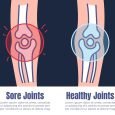
Introduction
Hockey is a sport defined by speed, precision, and agility. Whether you’re a professional player or a dedicated amateur, enhancing your speed skills can give you a competitive edge on the ice. In this article, we’ll explore the world of speed skills in hockey, from the importance of quickness to practical training tips and techniques.
The Importance of Speed in Hockey
Speed is a game-changer in hockey. It allows players to outpace opponents, create scoring opportunities, and defend effectively. Without speed, even the most skilled players can find themselves struggling to keep up with the fast-paced nature of the game.
Training for Speed
On-Ice Drills
To improve your speed on the ice, incorporate a variety of on-ice drills into your training regimen. These drills should focus on acceleration, quick changes of direction, and maintaining top speed.
Off-Ice Conditioning
Off-ice training is equally crucial. Strength and conditioning exercises, such as plyometrics and sprints, can significantly boost your speed. A strong lower body is essential for explosive bursts of speed.
The Role of Skating Technique
Proper skating technique is fundamental for speed. Work on your stride, balance, and edge control to maximize your efficiency on the ice. Video analysis with a coach can help identify areas for improvement.
Mental Preparation for Speed
Speed is not just physical; it’s also mental. Develop a strong mental game by visualizing yourself as a faster, more agile player. Confidence in your speed can lead to better on-ice performance.
Nutrition and Recovery
Maintaining a healthy diet and getting enough rest are essential for speed development. Fuel your body with the right nutrients, and prioritize recovery to prevent injuries.
Speed Enhancing Equipment
Explore the various equipment options designed to improve speed, such as lighter skates and training aids like speed parachutes. These tools can complement your training routine.
Speed on Defense
Defensemen also benefit from speed. Learn how to anticipate plays, position yourself effectively, and use your speed to break up offensive rushes.
Speed on Offense
Offensive players can use speed to create scoring opportunities. Mastering quick crossovers, pivots, and acceleration can leave defenders in the dust.
Speed in Transition Play
Transition play, moving swiftly from defense to offense (and vice versa), is a key aspect of modern hockey. Speedy transitions catch opponents off guard and lead to scoring chances.
Maintaining Speed Throughout the Season
Consistency is key. Don’t let your speed drop off as the season progresses. Maintain your conditioning and work on speed even during busy game schedules.
Famous Speedsters in Hockey
Take inspiration from legendary speedsters like Pavel Bure, Connor McDavid, and Paul Coffey. Their incredible speed has left a lasting impact on the sport.
Common Mistakes to Avoid
Avoid common pitfalls that hinder speed development, such as neglecting off-ice training, ignoring skating technique, and not paying attention to recovery.
Conclusion
In hockey, speed is a game-changer. It can turn an average player into a standout performer. By focusing on training, technique, and mental preparation, you can harness the power of speed to elevate your game on the ice.
FAQs
- How often should I incorporate speed drills into my training routine?
- Aim for at least two to three speed-focused sessions per week.
- Are there any specific off-ice exercises that can help improve speed?
- Yes, plyometric exercises like box jumps and agility ladder drills can be highly effective.
- What role does flexibility play in speed development?
- Flexibility is crucial for efficient skating. Incorporate stretching into your routine to maintain flexibility.
- Can speed be improved at any age?
- Yes, with the right training and dedication, speed can be improved at any age.
- Are there any dietary supplements that can enhance speed?
- Consult with a sports nutritionist for personalized recommendations, but a balanced diet is typically sufficient.




